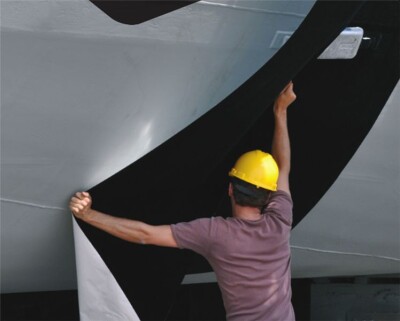Dale Williams admits he was on his soapbox. Williams is the owner of Williams Fabrication, a boatyard in Bayou La Batre, Ala., that builds fishing boats for Gulf of Mexico and East Coast fishermen. He was lecturing a member of the Coast Guard who had come to the boatyard to see if the scallop boats he was building would meet class or load line regulations.
"You walk on a boat and start looking for correct documentation," Williams began. "You ask do you have a flare kit? Do you have safety inspection on the life raft? And walk by a watertight door that the dogs don't even work on and some are missing, and then go into the engine room to see if it has a fire extinguisher and walk by a bilge manifold rusted through, or a bulkhead gland held up by a string." Then he adds, "I've got pictures."
Building the Liberty, a 78-foot combination crabber and lobster boat that launched last fall, would have been a more difficult and expensive job had the vessel's construction been subject to U.S. Coast Guard class rules. Williams Fabrication photoWhat set Williams off was the whole idea of having to class boats 50 feet and over, supposedly to make them safer. That, he says, "is a bunch of crap. If the Coast Guard would implement the rules on the books now, boats would be a lot safer."
Not only will classing not make fishing boats safer, the process will push the cost of a boat up so high "it will put us out of business," says Williams. For instance, an engine outfit he was talking to figured that to class a new engine would drive the price up by 25 percent. "What does that do to increase the safety of a boat? Nothing," Williams says.
Add to that all the steel, welding material, piping, pumps and wiring that has to be approved by a classification society, plus all the drawings, and, he says, "you create jobs for other people and put us out of business."
Oh, and as for the boat owner who likes to come to the building site and make changes while the boat is being built? No more. Or if changes are made, it's only after new drawings are submitted to and reviewed by the classification society. If the classing society has a backlog, that adds more time and money to the process.
Then there's the guy who started as a deckhand and wants to some day own his own boat. The cost to build a new boat makes that a much more elusive dream.
This is an issue "that has got to be addressed," says Williams.
He's not the only one who feels this way. Boatbuilders, naval architects and a few — very few — fishermen have talked about their displeasure with the regulation. But they are all isolated voices, and as long as they remain that way and lack legislative backers or lobbying groups, the situation won't change.
A big part of the problem is the balkanization of much of the fishing industry by region and boat types, resulting in the lack of a united front when it comes to something as basic as determining how safe the boat on which you'll be fishing is. It's basically a question of control and now that is being left up to the politicians.
In the workboat industry there is an outfit called the National Association of Charterboat Operators. They have done a lot of work for a diverse group of boat owners engaged in things such as fishing, sailing, diving, eco-tours and excursion boats.
Is something like that possible for owners of seiners, crabbers, scallopers and the rest of the fishing fleets? It's an idea. The other option is continuing to let members of Congress determine what kind of boat is safe. And how many Congressmen and women ever get close to a fishing boat, let alone operate one?







